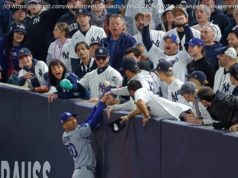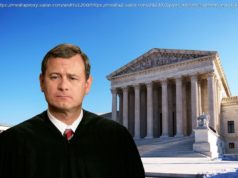America’s courage shined through the smoke on day of infamy
Few days in American history were as dark as Dec. 7,1941.
That morning, the world changed. A surprise Japanese aerial attack on the naval base at Pearl Harbor in Hawaii dealt a major blow the Pacific Fleet, killing 2,403 U. S. personnel and damaging 19 warships. Total American casualties numbered 3,581, while the blow to the nation’s psyche was felt across the mainland. World War II could no longer be avoided.
Through the smoke, there was hope.
American courage, on display in countless stories throughout the war, was in no short supply through the Pearl Harbor raid. Here are just some of the stories of heroism during that day of infamy.
Samuel Fuqua
A lieutenant commander aboard the USS Arizona, which was devastated in the attack and remains sunken in the harbor, became the battleship’s senior officer after a bomb detonated the ship’s ammunition magazine. While he briefly lost consciousness during the attack, he was able to direct firefighting efforts and rescue burning sailors. He directed the ship to be abandoned, staying aboard until he was sure all personnel who could be saved were off the ship. For his courage, Fuqua was awarded the Medal of Honor in March 1942.
Peter Tomich
An Austro-Hungarian immigrant and World War I veteran, he served at Chief Watertender on the USS Utah. After the battleship received a torpedo hit to the hull, Tomich returned to the his station in the boiler room, evacuated shipmates and shutting down the boilers before the Utah sank with him aboard. He was awarded the Medal of Honor, but no kin could be found to posthumously give it to until 2006, when a Admiral Harry Ulrich presented it to Tumich’s family members in Croatia.
George Welch and Kenneth Taylor
After a night of partying, these Army Air Corps pilots spred to Wheeler Army Airfield and sprang into action, becoming the first American pilots in the air. Against incredible odds, the pair was officially credited with shooting down seven aircraft from their P-40 fighters – all in tuxedo pants. Both were awarded the Distinguished Service Cross, and Taylor received a Purple Heart.
Doris Miller
Before the attack, Miller’s naval exploits were limited largely to the mess hall as an attendant and the boxing ring as the USS West Virginia’s heavyweight champ. As an African-American, he wasn’t expecting much combat. That changed during the raid when he was assigned to help carry wounded men to safety and ordered to the bridge to aid the mortally wounded captain. He then manned an anti-aircraft gun, firing until he was out of ammo. « I think I got one of those Jap planes, » he said. Hailed as a war hero by the black press, he was awarded the Navy Cross for his efforts. Miller’s war would continue, but he was killed when the escort carrier USS Liscome Bay was torpedoed and sunk in 1943.
John Finn
Another Medal of Honor recipient, this chief petty officer was in charge of aviation ordnance and munitions at Kaneohe Bay air station 15 miles from the harbor. Finn was sleeping with his wife when the attack started. Rushing to the station, he set up a heavy-caliber machine gun to give the Japanese a « warm welcome. » Firing at planes for more than two hours, Finn sustained over 20 injuries but continued to help arm planes after some brief medical attention. He retired from the Navy with a rank of lieutenant and died in 2010 at 100.
George Walters
Walters was no soldier, but he was a hero nonetheless. A dockyard worker, he positioned a large crane to guard the battleship USS Pennsylvania and used it to point out incoming bombers. A nearby bomb nearly killed him, but he survived, living to 95, and was credited with helping to save the Pennsylvania.
Edwin Hill
The USS Nevada escaped Battleship Row and eventually participated in the Normandy landings of 1944. It may never have done that without Hill. The chief boatswain led a sortie ashore to cut the ship loose, allowing the Nevada to cast off and get underway. Hill then dived back into the water to return to the ship, resuming his duties on board. He was killed later in the attack and was posthumously award the Medal of Honor.
Phil Rasmussen
Like Welch and Taylor, this pilot wasn’t dressed for the occasion, but Rasmussen took to this air in his pajamas. Joining a dogfight with 11 Japanese aircraft, he shot down one from his P-36 and survived despite his fighter being riddled with 500 bullet holes. He landed without brakes, rudder or tailwheel. Rasmussen was awarded the Silver Star and remained in what became the Air Force until 1965.






